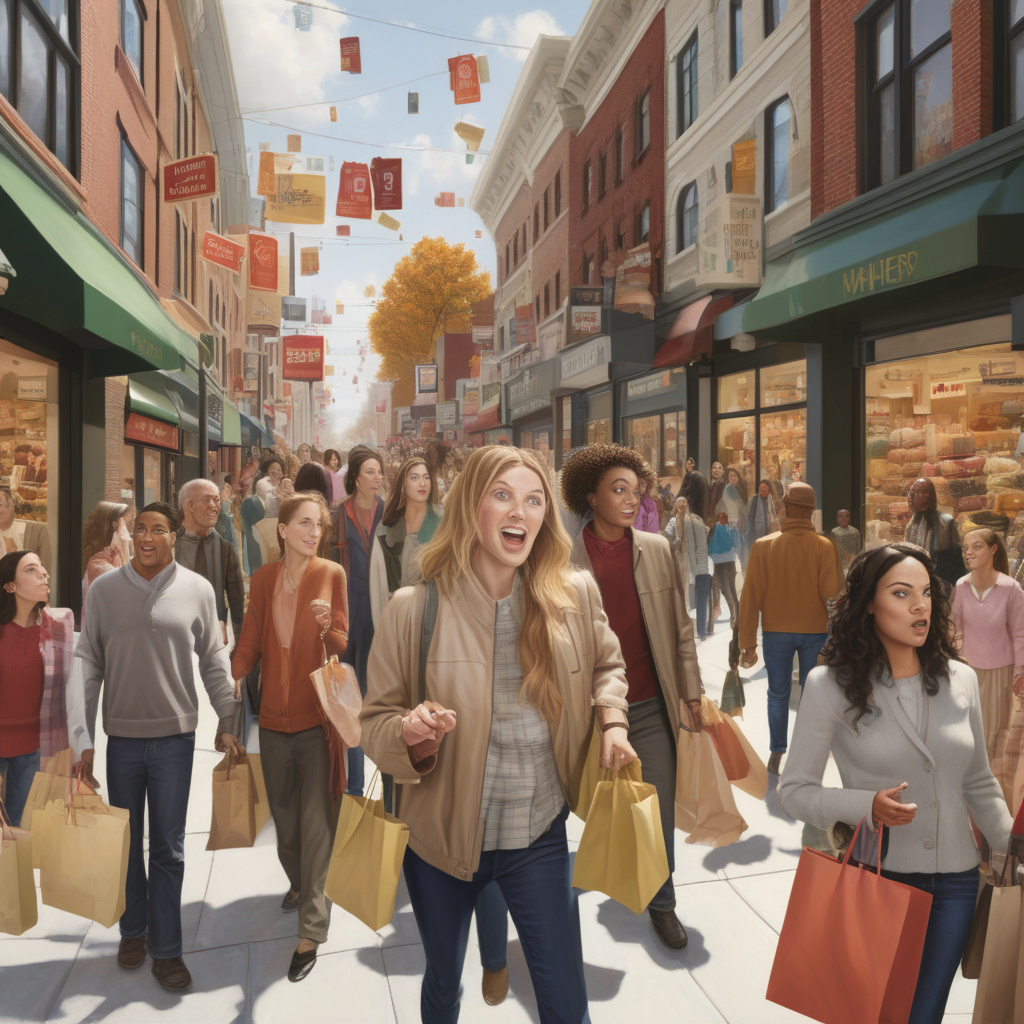Shop Inflation Falls in October: A Positive Shift for Retailers and Consumers
In a welcome development for both retailers and consumers, shop inflation in the UK has experienced a notable decrease, falling by 1% year-over-year in October. This decline is a significant improvement compared to the 1.4% increase recorded in September, signaling a potential easing of financial pressures on households as well as a more favorable environment for retailers.
According to data released by the British Retail Consortium (BRC), the trend in shop inflation reflects broader changes in the market. Helen Dickinson, the chief executive of the BRC, stated, “Overall shop price inflation slowed in October, driven by a reduction in food prices and a more stable supply chain.” This statement underscores the interconnectedness of food prices and overall shop inflation, highlighting how shifts in one sector can influence another.
Notably, UK food inflation has also seen a decrease, dropping by 3.7% year-on-year in October, a marked improvement from the 4.2% growth reported in September. This decline in food prices comes as a relief to many consumers who have faced soaring costs in recent months. With the cost of living crisis still impacting households, the reduction in food inflation provides an opportunity for consumers to regain some purchasing power and alleviate financial strains.
The BRC’s findings suggest that the slowdown in shop inflation can be attributed to several factors, including a more stable supply chain and potentially lower demand for certain goods. As retailers adjust to these changes, some are beginning to pass on the savings to consumers, thereby helping to stabilize prices and encourage spending. This dynamic is critical for the retail sector, which has faced challenges in recent years due to fluctuating costs and changing consumer preferences.
Retailers are responding to this shift in inflationary trends with cautious optimism. Many are looking to capitalize on the reduced prices by promoting sales and discounts, which can drive foot traffic and boost sales. In this competitive landscape, attracting consumers will be paramount for businesses hoping to maintain or grow their market share. Retailers who can effectively communicate their value propositions and offer competitive pricing will likely fare better in the coming months.
Furthermore, the decline in inflation may signal a broader trend that could influence consumer confidence. When consumers perceive that prices are stabilizing, they may be more inclined to spend, which can, in turn, stimulate economic growth. The retail sector plays a vital role in the economy, and any signs of improvement can have a ripple effect across various industries.
As we continue to analyze the implications of falling shop inflation, it is essential to consider the context in which these changes are occurring. The previous months have been characterized by inflationary pressures fueled by supply chain disruptions, energy price increases, and geopolitical tensions. The recent decline in shop and food inflation may suggest that these pressures are beginning to ease, which could lead to a more favorable economic outlook.
However, caution remains warranted. While the data is promising, retailers and consumers alike must stay vigilant. Economic uncertainties, such as fluctuations in global markets or changes in consumer behavior, could impact future inflation rates. Retailers must be prepared to adapt to these challenges while also fostering consumer trust and loyalty.
In conclusion, the fall in shop inflation by 1% year-over-year in October marks a significant turning point for the retail sector. With food inflation also declining, there is potential for improved consumer confidence and spending. As retailers navigate this evolving landscape, the key will be to balance competitive pricing with quality offerings to meet the needs of consumers. This shift in inflationary trends is not just a statistic; it has real implications for the economy and the everyday lives of individuals.
#ShopInflation, #RetailTrends, #ConsumerConfidence, #UKEconomy, #BRCInsights
